Choice chambers are an investigative method used to study animal behaviour and to determine the favoured conditions for a habitat.
It is a very simple investigation to set up, and one that kids love as it involves searching for insects and then predicting and watching.
The living organisms that we chose to study were woodlice, as they are easy to find.
We decided to investigate whether woodlice
- prefer damp or dry conditions
- dark or light conditions
You will need:
A minimum of 5 woodlice
A collection pot
Two dishes with lids
Filter paper (I just used coffee filter paper)
Dark or black paper
A pen/scissors
Method
1. In your collection pot, put in some soil and dried leaves. Start looking under stones and bricks for some woodlice and put them in the pot. Make sure it is deep, as woodlice are very good climbers, and we had a few escapees! This is just to keep them happy when not under investigation, as we do not want to put them under undue stress.
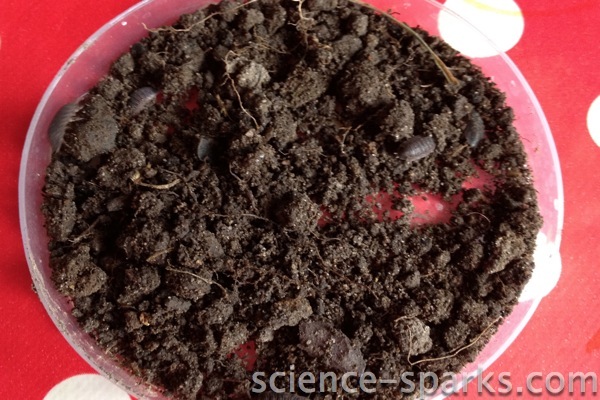
2. Draw around the lid of your pot onto the filter paper
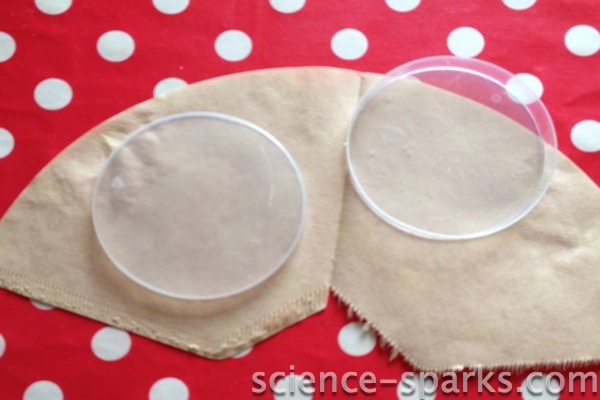
3. Cut it out and fold it in half.
4. Wet it and place it on one side of the pot.
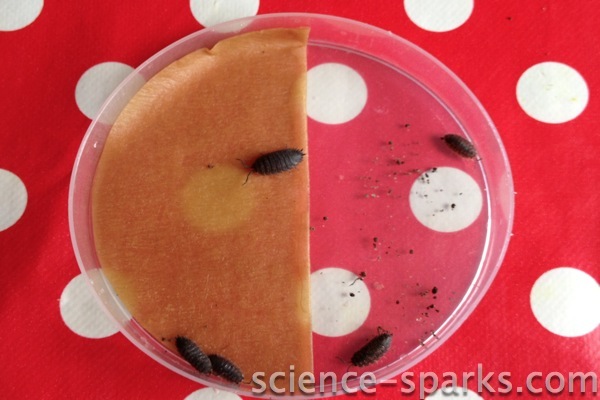
5. Add your woodlice and, over time, see which side they prefer over time (about 5 minutes to let them acclimatise to their surroundings). The side that has the most woodlice is the side they prefer.
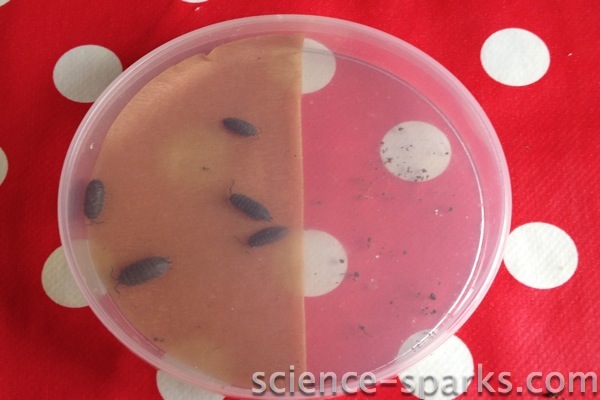
6. You can then repeat this experiment using dark paper to block out one side of the lid to see whether they prefer dark or light conditions.
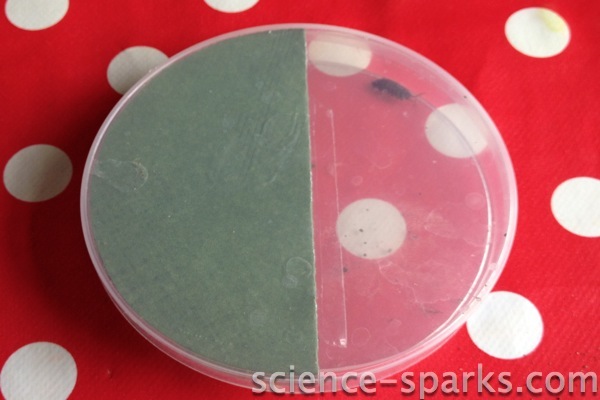
7. You could also see if you can carry this out with other insects.
Please be sure to return the insects to the place you found them.
Have Fun
Kerry
Last Updated on March 14, 2023 by Emma Vanstone

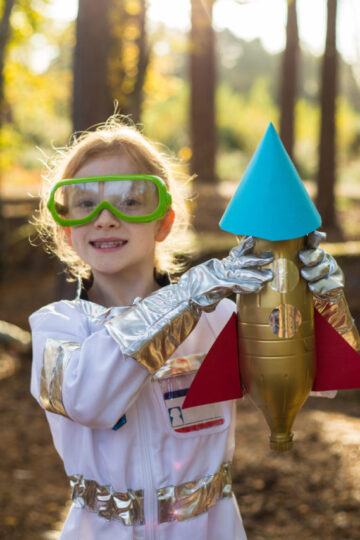

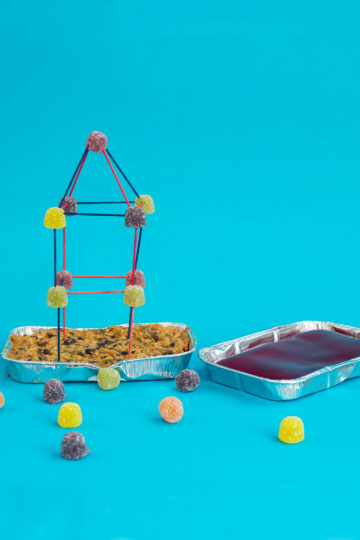
Emma @Snugglebuttandtheminimes says
I remember doing this at school! I will have to try it with the mini mes though too 🙂 x
Shiloh says
That's so cool! What a fun experiment. Lol, down here, we would probably use palmetto bugs.
TheBoyandMe says
This is brilliant, just need to find some woodlice now.
Cerys @ Rainy Day Mum says
After finding some woodlice in the garden the other day I was thinking of doing this it's such a fun experiment to do.
Pinkoddy says
I have a little area in my garden where my compost bins are too encourage things such as woodlice so I can easily find some so will definitely do this when we get to the letter W. thanks for sharing.
MsXpat says
I've seen these creatures scurrying about the flat we began renting recently, now I know what they are! This is one way to treat them.
Alissa @ Creative WIth Kids says
Very cool experiment! Thanks for your simple explanations, and thanks for linking to Kids Get Crafty! Alissa and Maggy
Trisha @ Inspiration Laboratories says
Great experiment. We've done this with earthworms in my biology class.
Gary Skinner says
woodlice are NOT insects!!
ScienceSparks says
You are right 🙂 Little typo there.
Angie says
Those look like rolly pollies. This is the first time I've heard the term woodlice. Neat.